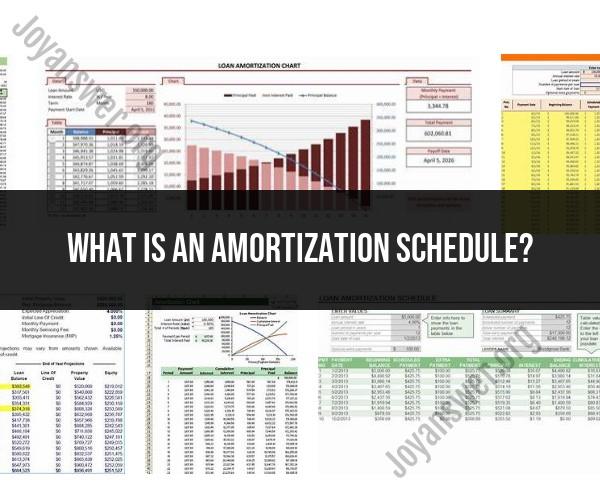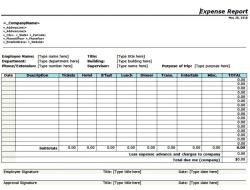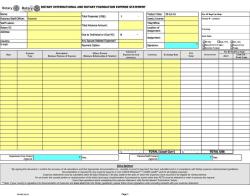What is an amortization schedule?
An amortization schedule is a critical tool that helps borrowers understand the repayment journey of their loans. In this article, we will delve into the concept of amortization schedules, explore their components, and learn how to interpret them for effective loan repayment.
1. Introduction to Amortization Schedules
Amortization schedules are essential tools in the world of loans and finance. They provide borrowers with a clear roadmap for repaying their loans over time. By using an amortization schedule, borrowers gain valuable insights into their monthly payment obligations, the distribution of payments between interest and principal, and how their outstanding loan balance evolves with each payment.
Understanding the significance of amortization schedules is crucial, as it lays the foundation for effective loan management. Borrowers can better plan their finances, make informed decisions, and stay on track with their loan repayment journey.
2. Components of an Amortization Schedule
An amortization schedule consists of several key components:
- Payment Number: This is a sequential number assigned to each payment.
- Payment Amount: The total payment due for a specific period, including both principal and interest.
- Principal Payment: The portion of the payment allocated to reduce the outstanding loan balance.
- Interest Payment: The portion of the payment covering the interest charges for that period.
- Total Interest Paid: The cumulative sum of all interest payments made up to that point.
- Remaining Loan Balance: The outstanding loan balance after each payment is made.
Understanding these components allows borrowers to grasp how their payments are structured and how they contribute to the overall loan repayment process.
3. How Amortization Works
Amortization schedules are a reflection of the underlying mathematics involved in loan repayment. At the beginning of a loan term, a significant portion of each payment goes toward paying off interest, while a smaller fraction is allocated to reducing the principal. As the loan matures, the proportion dedicated to interest gradually decreases, while the share allocated to the principal increases.
The mathematical formulas used for calculating these components can be complex, but they are essential to ensure that each payment reduces the loan balance while fairly compensating the lender for lending money.
4. Creating an Amortization Schedule
Creating an amortization schedule can seem daunting, but it's made relatively simple with the help of spreadsheet software or online calculators. Borrowers input specific loan details, such as the loan amount, interest rate, loan term, and any additional payments. The software then generates a comprehensive schedule outlining each payment over the life of the loan.
This step-by-step process empowers borrowers to visualize their entire loan repayment journey and aids in effective financial planning.
5. Interpreting an Amortization Schedule
Interpreting an amortization schedule is vital for borrowers who wish to stay informed about their loan progress. By carefully examining the schedule, borrowers can track how their payments contribute to reducing the principal balance, monitor the gradual decrease in interest charges, and calculate the total interest paid to date.
This interpretation ensures that borrowers remain in control of their loan repayment and can make well-informed financial decisions.
6. Benefits of Using an Amortization Schedule
Using an amortization schedule offers several key benefits. It empowers borrowers to:
- Understand the composition of each payment.
- Visualize their progress in paying down the principal.
- Calculate the total interest paid over the life of the loan.
- Plan for future expenses by knowing their monthly payment obligations.
- Evaluate the impact of additional payments or changes in interest rates.
By leveraging these benefits, borrowers can make informed choices about their loans and potentially save money on interest.
7. Scenario Analysis and Prepayments
Borrowers can significantly impact their loan repayment through scenario analysis and prepayments. Scenario analysis involves exploring how changes in interest rates or payment amounts may affect the loan term and total interest paid. By understanding these scenarios, borrowers can make decisions that align with their financial goals.
Prepayments, such as making extra payments or increasing monthly installments, can substantially reduce the overall interest paid and shorten the loan term. Knowing how to strategically use prepayments can help borrowers become debt-free faster and save money in the long run.
8. Loan Comparison Using Amortization Schedules
Amortization schedules are invaluable tools for comparing different loan offers. Borrowers can input the terms of various loan options into an amortization calculator to visualize how each loan would impact their finances over time. This comparison allows borrowers to choose the loan that best aligns with their financial goals and budget.
9. Using Amortization Schedules for Financial Planning
Amortization schedules are not just for loan management; they are also essential for financial planning. Borrowers can integrate their loan repayment into their broader financial goals and budgeting strategies. This approach ensures that loan obligations are in harmony with an individual's overall financial well-being.
10. Conclusion
In conclusion, mastering the art of amortization schedules is a fundamental skill for borrowers. These schedules offer transparency into the intricacies of loan repayment, allowing borrowers to make informed financial decisions, track their progress, and effectively manage their loans. Whether it's a mortgage, car loan, or any other form of debt, understanding and utilizing amortization schedules can lead to financial empowerment and greater control over one's financial future.











